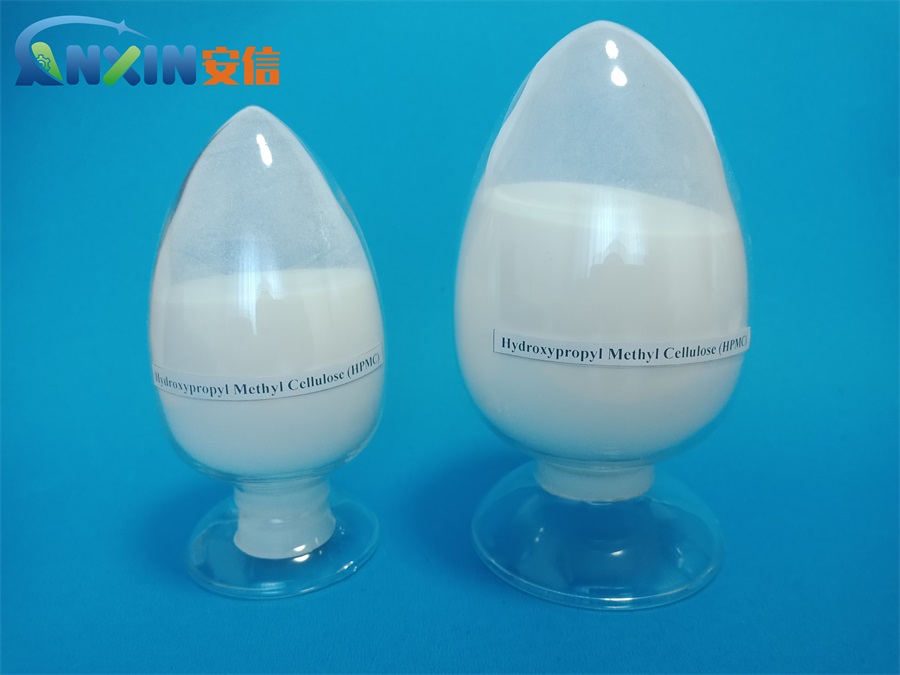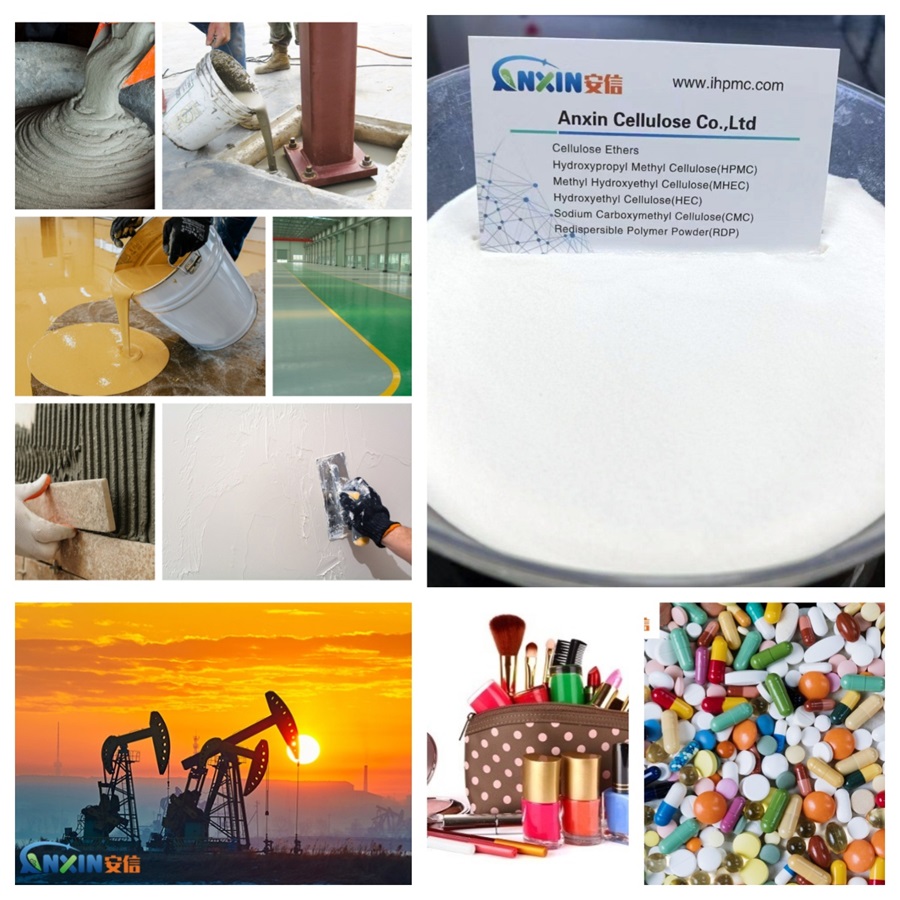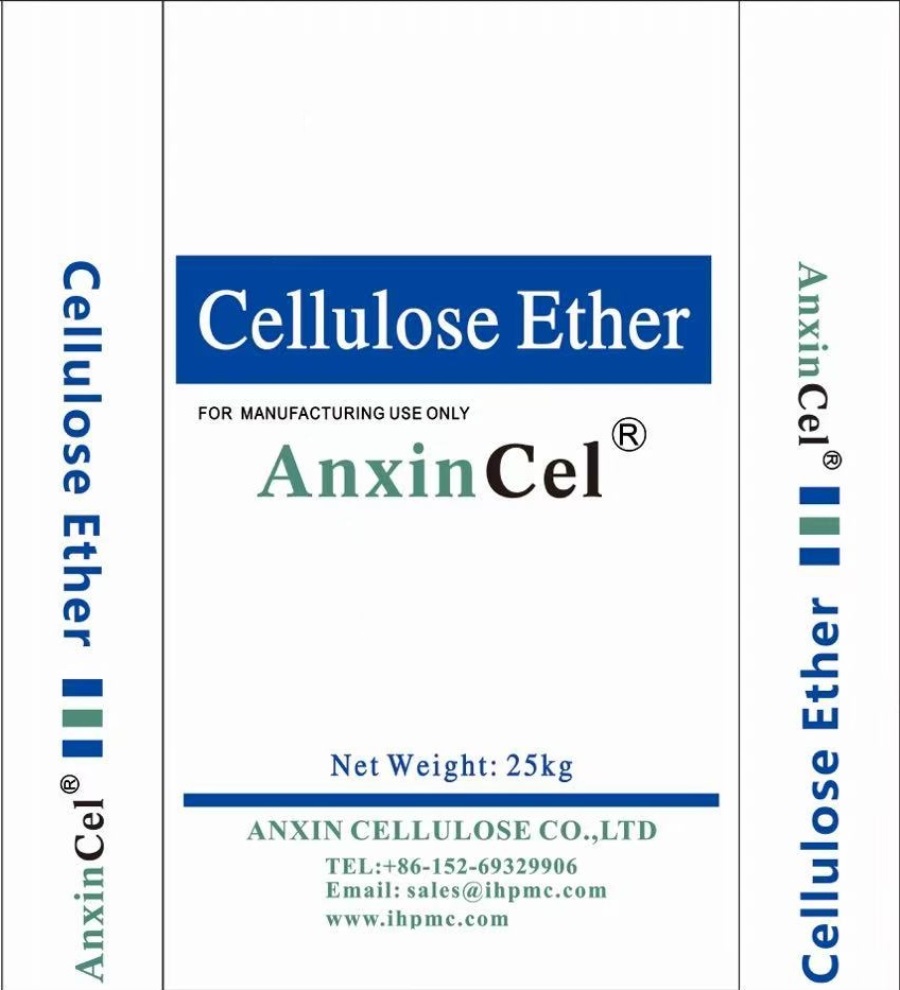When selecting Hydroxypropyl Methylcellulose (HPMC), evaluating its water retention is a key quality indicator, especially in applications in the fields of construction, pharmaceuticals, cosmetics, etc. Water retention directly affects its performance in the formulation, such as adhesion, consistency and stability.

1. Molecular structure and molecular weight
The molecular weight of AnxinCel®HPMC and its molecular structure directly affect its water retention performance. Generally, the higher the molecular weight of HPMC, the better the water retention. HPMC with a larger molecular weight has a longer chain structure, which can absorb more water and form a more stable gel structure.
High molecular weight HPMC: It has lower solubility in water, but can better retain water, and is suitable for applications with high water retention requirements, such as building mortar, coatings, etc.
Low molecular weight HPMC: Poor water retention, but better fluidity, suitable for formulations that require rapid solidification or rapid drying.
2. Hydroxypropyl content
Hydroxypropyl content refers to the content of hydroxypropyl groups in HPMC molecules, usually expressed as a mass percentage. The content of hydroxypropyl affects the solubility, viscosity and water retention of HPMC.
High hydroxypropyl content HPMC: can be better dissolved in water and increase hydration, so it has better water retention and is particularly suitable for use in high humidity environments.
Low hydroxypropyl content HPMC: poor solubility, but may have higher viscosity, which is more suitable in some applications such as thick paste coatings.
3. Solubility
The solubility of HPMC is one of the important factors in judging its water retention. Good solubility helps it to be evenly dispersed in water, thereby exerting a better water retention effect.
Warm water solubility: Most HPMCs are easily soluble in warm water. The dissolved HPMC can form a colloidal solution, which helps it stay moist in the cement slurry and prevents the water from evaporating too quickly.
Cold water solubility: For products that need to be used in low temperature environments, HPMC with better cold water solubility is more suitable. This type of HPMC can dissolve quickly at room temperature or low temperature to ensure water retention during construction.
4. Particle size distribution
The particle size of HPMC directly affects its dissolution rate and water retention performance. HPMC with finer particles dissolves faster and can quickly release water in the system, thereby enhancing its water retention effect. Although HPMC with larger particles dissolves slower, it can form a more stable hydration in the system, so the water retention is more durable.
Fine particle HPMC: Suitable for applications that require rapid dissolution, can release water quickly, and is suitable for products such as dry-mixed mortar and adhesives that require higher initial hydration.
Coarse particle HPMC: More suitable in scenarios that require longer water retention, such as long-lasting cement slurry, binders in building materials, etc.

5. Moisture content
The moisture content of HPMC will also affect its water retention performance. Excessive moisture can cause HPMC to change its performance during storage and use. Therefore, dry HPMC usually has a longer shelf life and more stable performance. When choosing, pay attention to its moisture content to avoid excessive moisture affecting the use effect.
6. Temperature resistance
The water retention of HPMC is also closely related to its temperature resistance. Some applications may require HPMC to maintain stable hydration at higher temperatures. For example, architectural coatings may need to be used at high temperatures during construction. Choosing HPMC with strong temperature resistance can ensure good water retention during construction and prevent the material from drying too quickly.
7. Stability
The stability of HPMC will also affect its water retention under different pH and temperature conditions. Stable HPMC can maintain water retention for a long time in various environments, especially in strong alkaline or acidic environments such as cement or gypsum. It is crucial to choose HPMC with strong stability. If the chemical stability of HPMC is poor, its water retention may decrease over time, affecting the final performance.
8. Additives and surface treatment
Some HPMC products will add some special surface treatments or functional additives during the production process to improve their water retention. For example, by adding certain polymers or colloids, the water retention capacity of HPMC can be further improved. In addition, some products will improve their fluidity by adding anti-caking agents, making HPMC more convenient during use.

9. Test methods
When selecting HPMC, some test methods can be used to evaluate its water retention. For example:
Water absorption test: Determine the amount of water that HPMC can absorb in a certain period of time.
Water holding capacity test: Test the ability of AnxinCel®HPMC to retain water during mixing by simulating construction conditions.
Viscosity determination: Viscosity directly affects its hydration. Its water retention is judged by viscosity. HPMC with higher viscosity usually has better water retention.
When selecting the right HPMC, it is necessary to comprehensively consider multiple factors such as molecular weight, hydroxypropyl degree, solubility, particle size distribution, temperature resistance, stability, etc. According to the different needs of actual applications, choose the right type of HPMC product to ensure that its performance in water retention meets the requirements. Especially in the construction and pharmaceutical industries, the water retention of HPMC not only affects the construction effect, but may also affect the final quality of the product, so it should be selected with extreme caution.
Post time: Feb-21-2025